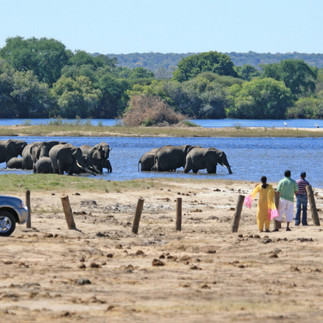Eye in the Sky: the power of aircraft in combatting wildlife poaching
- Dr. Adam Cruise

- Aug 1, 2024
- 3 min read
About the Author:
ADAM CRUISE | BIO
Wildlife investigative journalist associated with The Bateleurs.
Dr Adam Cruise has been a wildlife investigative journalist for twenty years. Decades of reporting on global wildlife issues such as poaching, trade and trophy hunting led him to delve deeper into the mechanisms fuelling such issues. Cruise has published in a number of international publications such as National Geographic, The Guardian and Daily Maverick. He is the author of four books and has a PhD in Philosophy specialising in environmental and animal ethics.
He is proud to now be associated with The Bateleurs in bringing critical commentary on wildlife issues to light.
Eye in the Sky: the power of aircraft in combatting wildlife poaching
As a wildlife investigative journalist, I am thrilled to be associated with The Bateleurs. This free-of-charge aerial service is an innovative and crucial component to the conservation of wildlife in the region.
Decades of operating in the field, often in the remotest of locations, I have understood the critical role aviation plays in saving Africa’s wildlife. My job mostly involves uncovering the horrors of wildlife poaching, hunting, trade and smuggling. I cannot begin to count the number of times where myself and colleagues have had to rely on flights to track down poachers, poached animals or to rush an injured animal to veterinary care.
For example, I have witnessed the power of aerial reconnaissance in revealing the latest elephant poaching hotspot in the most remote areas of northern Botswana. In these inaccessible areas, elephant carcasses far from human activity highlight the extortionate levels of poaching on elephants in that region. In recent months, over 100 elephant carcasses have been discovered by air in northern Botswana, all of them with their tusks removed. Sometimes poacher’s camps have been spotted.

Without this aerial reconnaissance, we may never have known just how bad the elephant poaching has become and in areas that were otherwise considered a safe-haven for elephants. This has resulted in calls for a change in policy as it has become clear that elephant poaching has shifted from East and Central Africa to southern Africa – the last stronghold of Africa’s elephants. This should convince authorities to beef up ranger patrols as well as more reconnaissance flights and, hopefully, this will help combat this latest surge in elephant poaching.
At other times, aerial surveys, have discovered hundreds of elephant carcasses, who have died from mysterious diseases, or poisoned with cyanide. This again all happens in the remotest areas where there is almost zero chance of discovering them on the ground.
In South Africa, a freshly poached rhino needed rapid forensic analyses, again a task often impossible to conduct without a helicopter or small fixed-wing aircraft. In Mozambique, I have personally witnessed a routine helicopter survey surprise and lead to the arrest of poachers that were laying snares for lions. Lions have become the latest target of international poaching syndicates as their teeth, claws and bones are prized in the Far East.
It is clear from the above stories, therefore, that aerial surveys are crucial in the fight against poaching. This has allowed wildlife authorities to be, not only privy to the enormous scale of the poaching problem, but to act against it with better intel and detailed coordinates.
The Bateleurs, by assisting the numerous conservation organisations they fly missions for, are at the forefront of this fight and I am proud to be part of it.
Note:
the above mentioned missions/stories have not been operated by The Bateleurs, rather experiences and stories that Dr Cruise has been part of over his career.










Comments